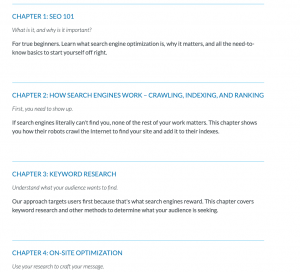
Have you ever joined a social media site, watched an online video or downloaded a free document from a website, just because you read that it’s free and beneficial to you?
Those are examples of a call to action (also known as a CTA). And they’re ALL over the Internet.
Why? Because they work. They are a necessary tactic to gain leads.
A CTA uses text and a link to persuade an audience to do an immediate action that is in the best interest of the company, while also benefitting the audience.
Creating and utilizing compelling CTAs is an integral part of online marketing, whether it’s through web design, social media marketing or content creation.
Don’t forget that the primary point of having a website is to entice people to purchase your products or services. In the world of digital marketing, CTAs can make the difference between meeting your sales/marketing goals and not.
You can find CTAs everywhere online. And for good reason. If your website or marketing emails do not have CTAs, you’re being left behind and not collecting as many leads as you should be.
The companies that “win” at online marketing are the ones who tell people what they want them to do and effectively get them to do it.
Do you want your target audience to visit a certain landing page?
Do you want website visitors to fill out a contact form?
Do you want customers to write a review?
Do you want website visitors to download a white paper?
Do you want your targeted audience to sign up for an event?
These are all actions that can be accomplished and enhanced by using CTAs.
Crafting and perfecting CTAs takes trial and error, which means that it takes time, analysis and creativity. First you must figure out what you want a specific audience to do. Then you tailor the CTA to that specific audience. Creating a CTA button that is attention-grabbing is a must (you may need a graphic designer for that). The key is to find out what your audience wants and give them it – but you will also get something in return, which is usually a purchase, contact information or a connection of some sort.
Factors of a powerful call to action:
- Direct and very easy
- Catches attention
- Unique
- Uses actionable language
- Encourages people to do the action immediately
- Removes or reduces risk of an obligation
You should have multiple and different CTAs on your website, social media presence, blog and marketing e-mails. Here are some specific ideas of where to place CTAs.
Business Website:
- Probably every page or almost every page on your website.
- The most important web pages to have CTAs: home page, Service/Product pages, Contact Us page and landing pages.
- Every blog post should have a CTA at the bottom and integrated throughout the text through embedded links.
Social Media:
- It would be a good idea to include a CTA toward the bottom of any type of business bio area that is available.
- Often, your social media posts should have CTAs.
- Facebook has made it easy to have a CTA on your Facebook business page. On the cover photo, to the left of the “Share” and “Like” buttons, is a Call to Action button that you can choose.
Emails:
- Make sure there is at least one CTA in every email blast sent to prospective customers. Some examples are: “contact us,” “connect with us on social media” and “watch this video.”
- Previous customers can receive emails with CTAs such as referral or review requests.
Through effective content development strategized by digital marketing experts, you can increase website visits, increase social media following and increase leads. Don’t leave out an imperative part of the equation: What do you want your audience to do? Chances are, they will turn into missed opportunities.
Digital & Social Articles on Business 2 Community(56)
Report Post







